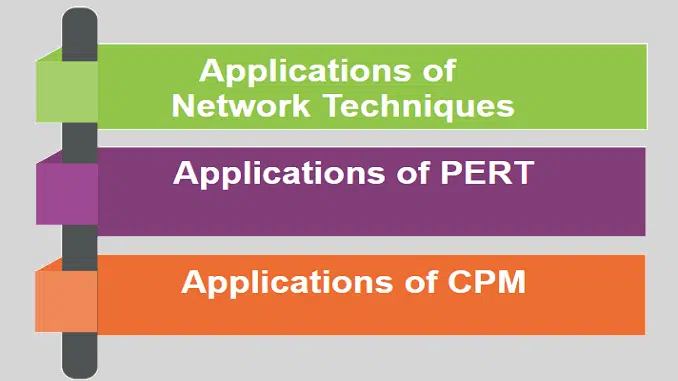
Introduction of PERT (Program Evaluation and Review Technique):
One of the standard methods of network analysis is the PERT Method (Program Evaluation and Review Technique). PERT is a CPM extension.
PERT was developed originally in 1958 and 1959 for the “age of massive engineering,” when Taylor and Gantt’s techniques were no longer applicable. After the technique was developed, the US Navy’s Special Projects Office implemented it on its Polaris Weapon System in 1958, for the Polaris missile program’s planning and control.
This was a large project involving many departments and there were many activities about which they had very little information about the duration of the project. PERT was successful in reducing this project’s completion time from 7 to 5 years. Since then, PERT has become a very popular technique used for project planning and control and spread rapidly across almost all industries.
The technique examines and depicts the tasks required to complete a project, in order to identify the least (shortest) time to complete each task and the minimum (shortest) time to complete the entire project. Its goal is to shorten the project’s time and cost.
First and foremost, the project is divided into activities and events using this technique. Following that, the proper sequence is determined, and a network is built. After that, the time required for each activity is calculated, and the critical path (longest path connecting all the events) is determined.
The objective of PERT analysis:
The main goal of PERT analysis is to find when a specific event will be completed within a given time frame. What are the odds of finishing the job? This approach takes into account uncertainties. Three-time values are estimated with each activity in this approach: optimistic, likely, and pessimistic. The three-time values provide a measure of the activity’s uncertainty.
- Optimistic time:
It is the shortest possible time for the activity to be completed, assuming that everything goes perfectly. They are generally denoted by ‘t0’ or ‘a’.
- Most likely time:
This is an estimate of how long the activity would normally take. This assumes normal delays. It is denoted by ‘tm’ or ‘m’.
- Pessimistic time:
The longest possible time the activity could take if all goes wrong. In other words, pessimistic time is the longest time that the activity could possibly take. This is generally denoted by ‘tp; or ‘b’.
- Expected time (Mean):
This is the average time an activity will take if it is to be repeated a large number of times and is based on the assumption that the activity time follows the Beta distribution.
- Variance:
Each activity’s variation is given by the following formula:
where to (a), tp (b) and tm(m) are optimistic, pessimistic and mostly likely times respectively.
(Source – Various books of college library)
Copyrighted Material © 2019 - 2024 Prinsli.com - All rights reserved
All content on this website is copyrighted. It is prohibited to copy, publish or distribute the content and images of this website through any website, book, newspaper, software, videos, YouTube Channel or any other medium without written permission. You are not authorized to alter, obscure or remove any proprietary information, copyright or logo from this Website in any way. If any of these rules are violated, it will be strongly protested and legal action will be taken.






Be the first to comment